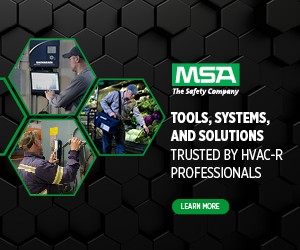CSB Establishes New Chemical Incident Reporting Rule

Because the CSB receives reports of chemical releases from multiple sources, including the National Response Center (NRC), finalizing the reporting rule was not previously determined to be a priority. However, a legal challenge was brought against the CSB to compel them to finalize a reporting rule and the U.S. District Court for the District of Columbia ordered the CSB to complete a rulemaking by February 2020.
In December 2019, the CSB published a Proposed Rule that would comply with the court order and establish a new reporting requirement. IIAR, along with many others in industry, responded to the Proposed Rule commenting on the proposed provisions in an effort to minimize duplication and reporting burden for regulated facilities. The Final Rule released in February 2020 incorporates some of the recommendations made by IIAR and others, but fundamentally moves forward with the creation of an additional reporting requirement that IIAR members must recognize.
KEY PROVISIONS OF THE FINAL RULE
The owner or operator of a facility must report any accidental chemical release resulting in a fatality, serious injury or substantial property damage. Serious injury is defined as any injury or illness that results in death or inpatient hospitalization. This definition was refined between the Proposed Rule and the Final Rule in response to comments made by IIAR and others that expressed concerns that the original definition was too broad and would capture minor incidents outside the interest of the CSB. Substantial property damage is defined as estimated property damage at or outside the stationary source equal to or greater than $1,000,000.
Given the definitions of “serious injury” and “substantial property damage”, it is likely that many releases IIAR members must report to the NRC may not fall under the requirements for CSB reporting. The current reportable quantity threshold for NRC reporting is 100 pounds over a 24-hour period. Many accidental ammonia releases that are stopped small and well-contained do not result in “serious injury” or “substantial property damage”. However, it is critical that IIAR members understand the new requirements and report to the CSB when applicable.
The Final Rule specifies that facilities will have 8 hours to report a covered incident to the CSB. This is an improvement over the Proposed Rule, which suggested a deadline of only 4 hours to make the report. In its comments to the CSB, IIAR expressed concerns that 4 hours was insufficient, as facilities are focused on emergency response in the first hours of an incident. Thankfully, the CSB acknowledged the need for additional time for reporting and extended the timeframe to 8 hours in the Final Rule
CONTENTS OF THE REPORT
The report required under the Final Rule must include the following information regarding an accidental release as applicable:
- The name of, and contact information for, the owner/operator
- The name of, and contact information for, the person making the report
- The location information and facility identifier
- The approximate time of the accidental release
- A brief description of the accidental release
- An indication whether one or more of the following has occurred:
- fire
- explosion
- death
- serious injury
- property damage
- The name of the material(s)involved in the accidental release, the Chemical Abstract Service (CAS) number(s), or other appropriate identifiers
- If known, the amount of the release
- If known, the number of fatalities
- If known, the number of serious injuries
- Estimated property damage at or outside the stationary source
- Whether the accidental release has resulted in an evacuation order impacting members of the general public and others, and, if known:
- the number of persons evacuated
- approximate radius of the evacuation zone
- the type of person subject to the evacuation order (i.e., employees, members of the general public, or both)
Reports may be made by email to: report@csb.gov, or by telephone at 202- 261-7600.
WHAT IF YOU ALREADY REPORTED TO THE NRC?
The Final Rule recognizes that in some cases a facility is already required to make a report to the NRC within a specified timeframe. In order to minimize duplication, the Final Rule states that if the owner or operator has submitted a report to the NRC the CSB reporting requirement may be satisfied by submitting the NRC identification number to the CSB within 30 minutes of submitting a report to the NRC. This is the most likely scenario for IIAR members, as the industrial refrigeration industry is already accustomed to making reports to the NRC “immediately” after knowledge of a reportable incident.
If the owner or operator has not submitted a report to the NRC and notified the CSB the owner/operator must submit a report directly to the CSB within eight hours of the accidental release.
ENFORCEMENT
The Final Rule states that the CSB’s focus will be on education and compliance, not on “creating traps for the unwary”. However, the rule does make it unlawful for any person to fail to make reports required under the regulation. Suspected violations of the regulation will be forwarded to the EPA for possible enforcement action, which could include administrative penalties, civil actions, or criminal actions. To allow adequate time for compliance education, CSB will provide a one-year grace period. The CSB has indicated that it looks forward to working with owner/ operators and other stakeholders to help ensure compliance.
Moving forward, it is important for IIAR members to understand that they are now responsible for notifying the CSB of reportable incidents. In most cases, this will likely take the form of providing the CSB the NRC identification number within 30 minutes of contacting the NRC. However, there may be cases where facilities need to make a full report directly to the CSB. Members are encouraged to familiarize themselves with the regulation and be prepared to meet the new requirements.















